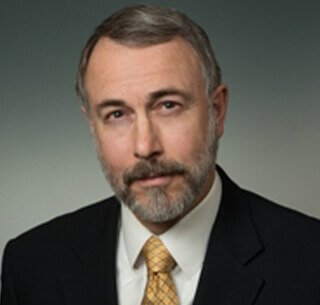Posted in: S&H IP Blog | U.S. Supreme Court
Google v. Oracle– Take 2
By: Richard A. Gollhofer, Partner
As discussed in the blog post on April 5, 2021, the U.S. Supreme Court’s decision in Google LLC v. Oracle Am., Inc.1 saved Google $9 billion and prevented Oracle’s attempts to control use of the Android operating system in hundreds of millions of devices. For everyone who has created or used a computer program that is not in the public domain or open source licensed, the important thing is why the Supreme Court found in favor of Google.
Justice Stephen Breyer’s majority opinion of the Supreme Court assumed for argument’s sake that the 11,500 lines of declaring code from the API for Java SE (0.4% of the API) copied by Google can be copyrighted, and focused on whether Google’s use of those lines was a “fair use.” That leaves the extent of copyright protection for computer programs a question that the Supreme Court could decide in the future. The existence of copyright protection for computer programs is well-established2, although there is still some disagreement among the U.S. Courts of Appeal regarding the extent of protection.
Although Google had argued otherwise, the court cited overwhelming U.S. case law that fair use is a mixed question of fact and law that is ultimately decided by a judge. The opinion cited Supreme Court precedent “that [found] fair use depends on the context” and noted the legislative history of the Copyright Act of 1976 instructed courts to “’adapt the doctrine [of fair use] to particular situations on a case-by-case basis’ and in light of ‘rapid technological change’”. According to Justice Breyer, the dissenting opinion prioritized certain factors in fair use analysis over others and asserted that “no attempt to distinguish among computer code is tenable”, views that the majority of the Supreme Court rejected.
The opinion explains how the four guiding factors set forth in the Copyright Act’s § 107 fair use provision: (a) the purpose and character of the use; (b) the nature of the copyrighted work; (c) the amount and substantiality of the portion used in relation to the copyrighted work as a whole; and (d) the effect of the use upon the potential market for or value of the copyrighted work”, are to be applied in the case of computer software. In this case, and many others, the question for the first factor is whether the use is “transformative.” Campbell v. Acuff-Rose Music3 established that “transformation is a key factor in fair use”4, but both Campbell and Google v. Oracle cited the highly influential article “Toward a Fair Use Standard”5.
There were two critical ways that the Supreme Court’s viewpoint differed from that of the Federal Circuit which found copyright infringement. First, “the value of the copied lines is in significant part derived from the investment of users (here computer programmers) who have learned the API’s system.” The Supreme Court took the view that the value belonged to the users, not the provider of the API. The Federal Circuit took the view that the value belonged to the creator of the copyrighted work. Second, the Supreme Court took the view that by using the copied declaring code of the API in a different computing environment, the Android platform for smartphones, Google’s use was “transformative” and “therefore consistent with that creative progress that is the basic constitutional objective of copyright”. The Federal Circuit’s view was the exact opposite, finding no transformation, because “the purpose of the API packages in Android is the same as the purpose of the packages in the Java platform; … Google made no alteration to the expressive content or message of the copyrighted material; and … smartphones were not a new context.”6
By relying on Section 107 of the Copyright Act to conduct fair use analysis, the Supreme Court left juries and judges to balance the facts in specific cases. In the original 2012 district court case, Judge Alsup held that the copied code cannot be protected as a method under Section 102(b), relying on the reasoning in Lotus v. Borland.7 Most observers would have preferred a simpler rule to apply, thereby making outcomes more predictable so that business decisions would be easier to make. Once again, as in the recent patentable subject matter decisions,8 the Supreme Court has shown a lack of concern for the effect of their decisions on businesses and a preference for preserving flexibility, if not downright muddy case law.
The Supreme Court’s opinion, as well as the Federal Circuit’s 2014 and 2018 decisions and Judge Alsup’s orders in 2012 and 2016 are available by clicking on the links in this sentence.
1 141 S. Ct. 1163, 2021 USPQ2d 391 (2021).
2 R. Gollhofer, “Copyright Protection of Computer Software: What is it and how did we get it?” Software Law Journal, Vol. V, No. 4, 1992.
3 510 U.S. 569, 579, 114 S.Ct. 1164, 1171, 127 L. Ed. 2d 500, 515, 29 USPQ2d 1961, 1965 (1994) made “transformative use .
4 Seltzer v. Green Day, Inc., 725 F.3d 1170, 1176, 107 USPQ2d 1803, 1806 (9th Cir. 2013).
5 103 Harv. L. Rev 1105 , 1110 (1990) by Pierre N. Leval, now a senior judge of the 2nd Circuit, in 1990 a judge in the S Dist of New York; https://www.law.berkeley.edu/files/Leval_-_Fair_Use.pdf.
6 Oracle Am. v. Google Llc, 886 F.3d 1179, 1200, 126 USPQ2d 1228, 1241 (Fed. Cir. 2018).
7 49 F.3d 807, 34 USPQ2d 1014 (1st Cir. 1995).
8 Bilski v. Kappos, 561 U.S. 593, 130 S.Ct. 3218, 177 L.Ed. 2d 792, 95 USPQ2d 1001, (2010); Mayo Collaborative Services v. Prometheus Laboratories Inc., 566 U.S. 66, 132 SCt 1289, 101 USPQ2d 1961 (2012); and Alice Corp. Pty. Ltd. v. CLS Bank Int’l, 573 U.S. 208, 134 S.Ct. 2347, 189 L.Ed. 2d 296, 110 USPQ2d 1976 (2014).



